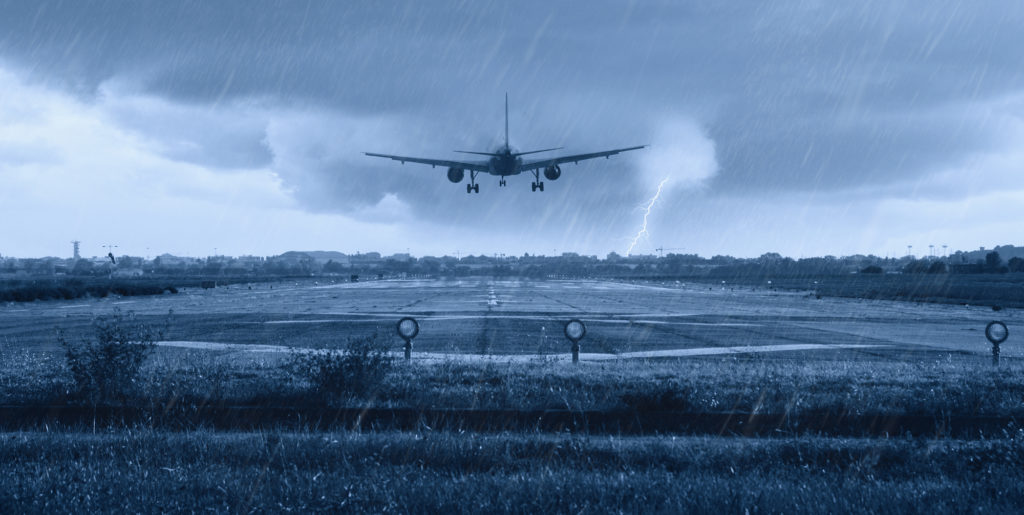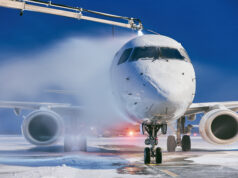
As the Squall Line columnist, it should come as no surprise that convective weather is my favorite subject. There is something that uniquely links me to the subject of thunderstorms. It might be the raw power of storms. It might be the intricate relationship of myriad metrological phenomena that make a thunderstorm that fascinates me. It might also be the absolute beauty of a cumulonimbus cloud that draws me to thunderstorms. Mystery aside, it may also be the desire for self-preservation that keeps me interested in convection. I’ll go with this last one.
I’d like to draw on an idea from a previous article — the idea that supposes that just because a flight did not end in an accident or injury, does not mean it was a safe flight. In tandem with this idea, and in hopes of solidifying this notion, I’ve linked a publicly available report, authored by Transport Canada. The report details the inflight incident of an ERJ145 encountering convective weather. This report details an event the likes of which we hope to never experience either as a pilot or a passenger. (https://www.skybrary.aero/bookshelf/books/3638.pdf)
The report illustrates preventable problems when dealing with convective weather, and my goal is to highlight circumstances that might be similar to past or future flights. Learn from that situation and dare not repeat it. Learn how to avoid the sequence of events that lead to this inflight upset and most importantly, make a case for widespread, mandatory use of ADS-B/downlinked weather radar on Part 121 aircraft.
After cringing in my seat while reading the report, my takeaway is that there were opportunities and resources that could have prevented the unsettling experience for both passengers and crew. The opportunities available to the crew included:
- A “no-go” decision
- Opportunity to delay the flight
- A 180° turn might have avoided the subsequent in-flight upset
WHAT COULD HAVE HELPED?
Beyond the flight crew options cited above, the resource that could have helped prevent the experience is ADS-B/downlinked weather radar. A very important point to know is that ADS-B/downlinked weather radar was not available on this aircraft for this crew.
I am a very big proponent of using downlinked weather radar in combination with airborne weather radar. This combination of resources can help provide a safe flight. You’ll learn from the report that this was not a very safe flight. Pay particular attention to Figures 2 and 3 in the report. One figure shows a radar depiction available to the dispatcher working this flight. The other figure shows the NOAA/NWS radar depiction. Which looks best? Now, imagine the picture of the airborne weather radar. Talk about discontinuity of useful information!
In the future, I am going to address the interface between downlinked weather radar, airborne weather radar, pilots, dispatch, ATC and the various issues surrounding convective weather avoidance. Citing the Transport Canada report is a good segue for future Squall Line topics. As we explore the merits of using various tools in weather avoidance, remember this article.
SOME POUNTS TO REMEMBER
Following are some quantitative data that are important to highlight. These numbers represent conditions that might have been avoided if downlinked weather radar had been available and used properly by the crew. Regrettably, ADS-B/downlinked weather radar is not mandatory equipment on Part 121 airplanes.
- The airplane exceeded its maximum certified altitude of 37,000 feet
- The airplane lost 4,000 feet of altitude
- The airplane banked from 45° to 77°
- The airplane experienced +2Gs
- The airplane achieved a pitch-down attitude of 23°
- The airplane achieved a descent rate of 9,300 fpm
- There was severe turbulence
- There was severe icing
Goals
1. Read it! Learn from this Transport Canada report on an inflight upset.
2. Ask yourself what you would have done prior to initiating the flight. What about during?
3. Ask how ADS-B/downlinked weather radar could have been used prior to and during the flight so as to avoid the very perilous situation faced by this crew and passengers.
4. Ask why downlinked weather is not more commonplace on part 121 aircraft.
Stay tuned for more on the topic.




















































